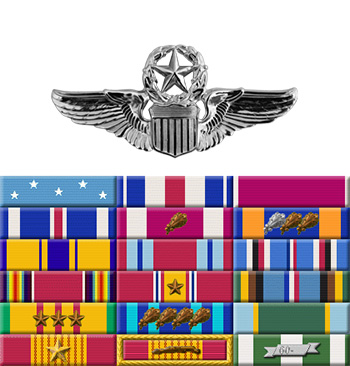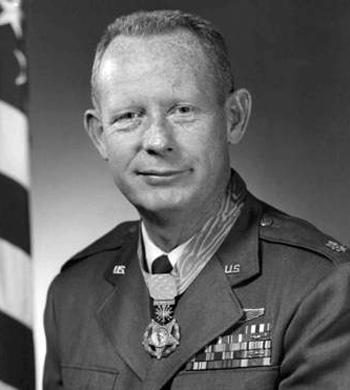
|
Bernard F. Fisher |
 |
|||
| Rank, Service | ||||
Colonel O-6, U.S. Air Force |
||||
| Veteran of: | ||||
|
||||
| Tribute: | ||||
Bernie Fisher was born on January 11, 1927, in San Bernardino, California. He enlisted in the U.S. Navy on February 10, 1945, and served until March 16, 1946. Fisher next enlisted in the Idaho Air National Guard on July 15, 1947, and served until he received a commission in the U.S. Air Force on June 11, 1951. After completing Undergraduate Pilot Training in April 1953, Fisher served as an interceptor pilot in Japan with Pacific Air Forces and then in Air Defense Command, flying out of Malmstrom AFB, Montana, and Homestead AFB, Florida. He began flying combat missions in Southeast Asia after transitioning into A-1 Skyraiders in 1965. Fisher flew with the 1st Air Commando Squadron out of Bien Hoa AB and then Pleiku AB, in the Republic of Vietnam from July 1965 to June 1966. During this time, Major Fisher flew 200 combat missions and was awarded the Medal of Honor for action in the A Shau Valley. After returning from Vietnam, Fisher served with the 496th Fighter Interceptor Squadron out of Hahn AB, West Germany, and then with the 525th Fighter Interceptor Squadron at Bitburg AB, West Germany. In October 1969, he became Operations Officer with the 87th Fighter Interceptor Squadron at Duluth International Airport, Minnesota, serving in this squadron until June 1971, when he became Senior Air Force Advisor for the 25th Air Division at Gowen Air National Guard Base in Boise, Idaho. Colonel Fisher retired from the Air Force on June 30, 1974. Bernie Fisher died on August 16, 2014, and was buried at the Idaho State Veterans Cemetery in Boise, Idaho. |
||||
|
||||

